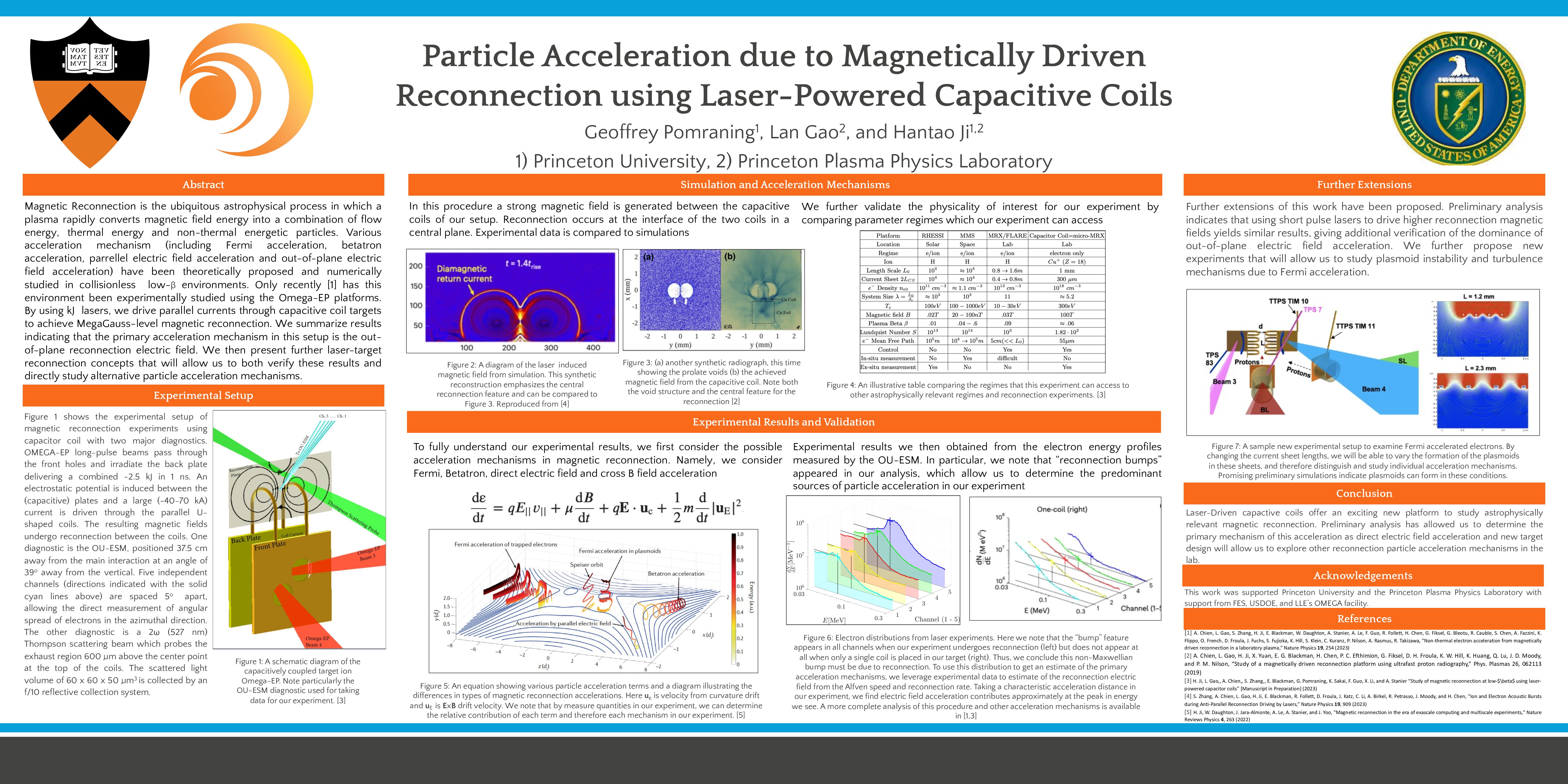Authors: G. Pomraning (Princeton), L. Gao (Princeton Plasma Physics Lab), H. Ji (Princeton, Princeton Plasma Physics Lab)
Magnetic Reconnection is the ubiquitous astrophysical process in which a plasma rapidly converts magnetic field energy into a combination of flow energy, thermal energy and non-thermal energetic particles. Various particle acceleration mechanism (including Fermi acceleration, betatron acceleration, reconnection electric field acceleration and electric field acceleration across magnetic fields) have been theoretically proposed and numerically studied in collisionless, low-Beta environments. Recently [1], this environment has been experimentally studied using the Omega-EP platform. Using kJ lasers, we drive parallel currents through capacitive coil targets to achieve MegaGauss-level magnetic reconnection. We present recent results indicating that the primary acceleration mechanism in this setup is the out-of-plane electric field. We then present further laser-target reconnection concepts that will allow both verification of these results and the direct study of alternative particle acceleration mechanisms.
[1]: A. Chien, L. Gao, S. Zhang, H. Ji, E. G. Blackman, W. Daughton, A. Stanier, A. Le, F. Guo, R. Follett, H. Chen, G. Fiksel, G. Bleotu, R. C. Cauble, S. N. Chen, A. Fazzini, K. Flippo, O. French, D. H. Froula, J. Fuchs, S. Fujioka, K. Hill, S. Klein, C. Kuranz, P. Nilson, A. Rasmus, and R. Takizawa, “Non-thermal electron acceleration from magnetically driven reconnection in a laboratory plasma,” Nature Physics 19, 254–262 (2023)


